8 Low-Maintenance Landscaping Ideas for Alabama
BY LASHONDA TUCKER | MAY 14TH, 2023 | ALABAMA, LAWN CAREAfter taking in the views at Cheaha State Park, returning to a home landscape that provides the same serenity and aesthetic pleasure is a welcoming thought. We’ve compiled eight low-maintenance landscaping ideas for Alabama homeowners to help you do just that. While you may not be able to duplicate the wonders of Cheaha in your yard, you can create a breathtaking landscape that is just as appealing.
And let’s be honest, the breeze from the Gulf of Mexico is nice, but sometimes the summers get really hot. These ideas will help you stay out of the heat, or at least allow you more time to enjoy the beaches at Gulf State Park when you are outdoors, instead of spending a lot of your time doing yard work. A spectacular-looking yard does not have to mean a lot of sweat and labor.
In this article, we’ll cover:
- Perennials: The Gift That Keeps Giving
- Let’s Go Native
- More Mulch, Please
- Add Sustainable Hardscaping
- Water Less With Xeriscaping
- Get Grounded in Groundcover
- No More Mowing with Artificial Grass
- Southern Succulents
1. Perennials: The Gift That Keeps Giving
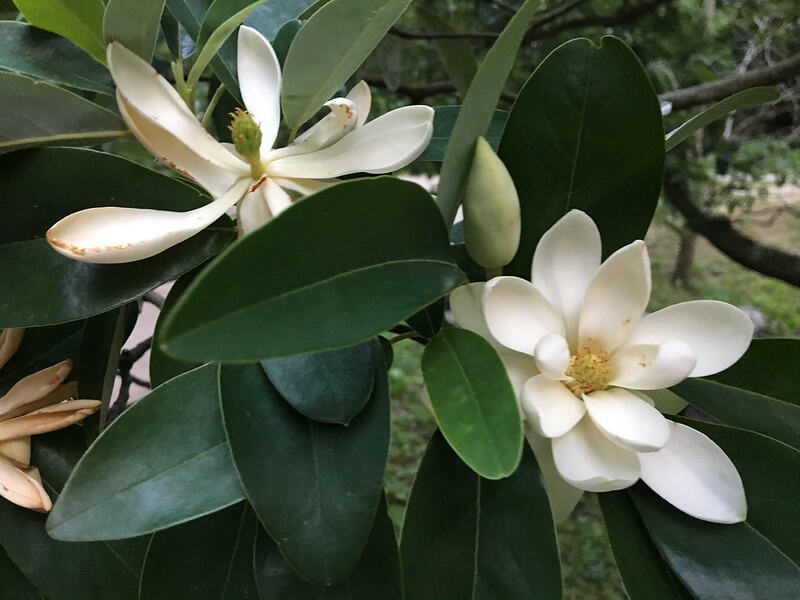
Photo Credit: Plant Image Library / Flickr / CC BY-SA 2.0
Planting perennials has many benefits. Annuals only last one season and must be replanted. Perennials, on the other hand, last many seasons after being planted only once. They require maintenance, but usually less than annuals. Most perennials require dividing for healthy growth and continued flowering.
Many perennials thrive as long as they receive sunshine and are planted in well-drained soil. The deep root systems of perennials help prevent erosion and promote healthy soil composition.
Perennials come in multiple colors, sizes, and textures, so you can have the same diversity as you would with annuals. Planting different perennial varieties means they’ll blossom at different times, giving you a colorful garden longer.
Check out these Alabama hardy native perennials:
- Eastern purple coneflower (Echinacea purpurea (L.) Moench)
- Eastern bluestar (Amsonia tabernaemontana Walter)
- White wild indigo (Baptisia alba (L.) Vent.)
- Rose mock vervain (Verbena canadensis)
- Sweetbay magnolias (Magnolia virginiana)
- Creeping phlox (Phlox subulata)
Advantages of perennials:
- Regrow for several years without being replanted
- Most are low maintenance
- Native perennials require less watering and less pest control
- Need little to no fertilizing
- Help create healthier soil
- Root system helps prevent erosion by filtering the water
- Tolerate adverse weather conditions
Estimated cost: The cost of perennials depends on the plant type and size, purchase location, and if you’re doing it yourself or hiring a professional. It costs between $650 and $3,000 for professional flower bed installation, depending on plant type and size, and the number of plants. Expect to pay between $10 to $100 per plant if you’re DIY’ing it. A package of seeds typically costs less than $2.
2. Let’s Go Native
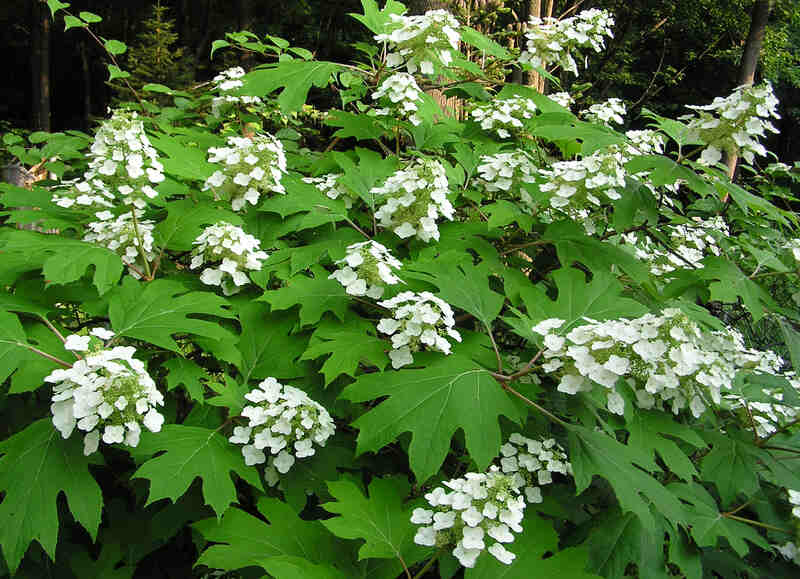
Photo Credit: normanack / Flickr / CC BY 2.0
Fill your flower bed and other areas of your yard with a diverse collection of native plants. From shrubs to sedums to ornamental grasses, native plants add variety, color, and interest to any home.
Native plants can make your life a little easier and promote a healthier environment. Most native plants are low maintenance because they have adapted to the Alabama climate. They require less watering and fertilizing and are more tolerant of local diseases and pests. As a result, fewer chemicals are needed to maintain native plants, meaning fewer harmful chemicals run off into the water supply and contaminate the environment.
Native plants provide habitat and nourishment for local insects, butterflies, birds, and wildlife, sustaining biodiversity and promoting a healthy ecosystem.
Here are some attractive Alabama native plants:
- Black-eyed Susan (Rudbeckia hirta)
- Oakleaf hydrangea (Hydrangea quercifolia)
- Big bluestem (Andropogon gerardii)
- Yaupon holly (Ilex vomitoria)
- Piedmont azalea (Rhododendron canescens)
- Largeflower tickseed (Coreopsis grandiflora Hogg ex Sweet)
Advantages of native plants:
- Adapted to the Alabama climate, so they need minimal maintenance to thrive once established
- Help decrease carbon pollution
- Require less watering and withstand dry conditions better than non-native plants
- Require fewer pesticides and fertilizer
- Tolerant of local pests and diseases
- Promote local insect and wildlife survival by providing food and habitat
Estimated cost: Native plant prices depend on plant type, size, and purchase location. Shrubs cost between $15 to $50. Expect to pay between $5 to $50 per vine. A tree averages between $200 to $1,500.
3. More Mulch, Please
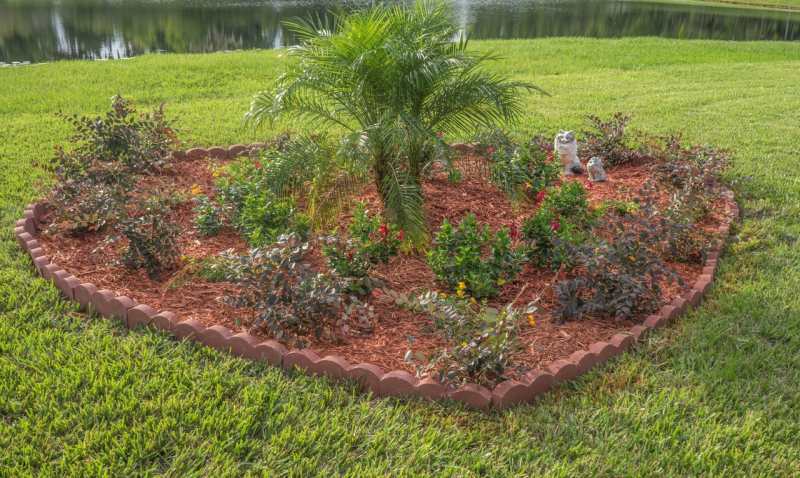
Photo Credit: PxHere
Mulch is a low-maintenance idea that saves time and money and benefits your soil and plants. Mulch protects the soil from direct sunlight, which reduces water evaporation and conserves water. It also prevents erosion, suppresses weeds, and protects the soil from extreme temperatures that can injure plant roots.
Weed suppression means less time and money spent on herbicides. When plant roots are protected from injury, like frost in the winter, you do not have to spend time repairing the damage or replacing plants. When you replace grass in difficult-to-mow areas with mulch, you reduce the time otherwise spent mowing the lawn.
You have two choices for mulch: organic and inorganic. Organic mulch can improve soil quality, aeration, and drainage. As it breaks down, it adds nutrients to the soil. Both organic and inorganic mulch can add aesthetic value to your home.
Mulch comes in different textures, colors, and styles. Here are some examples:
Organic mulch:
- Grass clippings
- Bark
- Pine needles
- Leaves
- Compost
- Wood chips
- Rotted manure
- Pine straw
Inorganic mulch:
- Stone
- Gravel
- Plastic
- Rocks
- Rubber
- Crushed seashell
Advantages of mulch:
- Provides temperature control, which protects roots from damage that can happen when soil is exposed to extreme temperatures
- Suppresses weeds
- Conserves water by reducing water evaporation
- Prevents erosion rainwater can cause
- Enriches the soil with nutrients
- Reduces time treating weeds by hand or with chemicals
- Reduces mowing
- When used at the base of shrubs and trees, it protects the plants from damage mowing can cause
Estimated cost: Organic mulch typically costs about $50 to $150 per cubic yard. Inorganic mulch costs about $20 to $400 per cubic yard. You can typically get mulch at $3 to $7 a bag.
4. Add Sustainable Hardscape
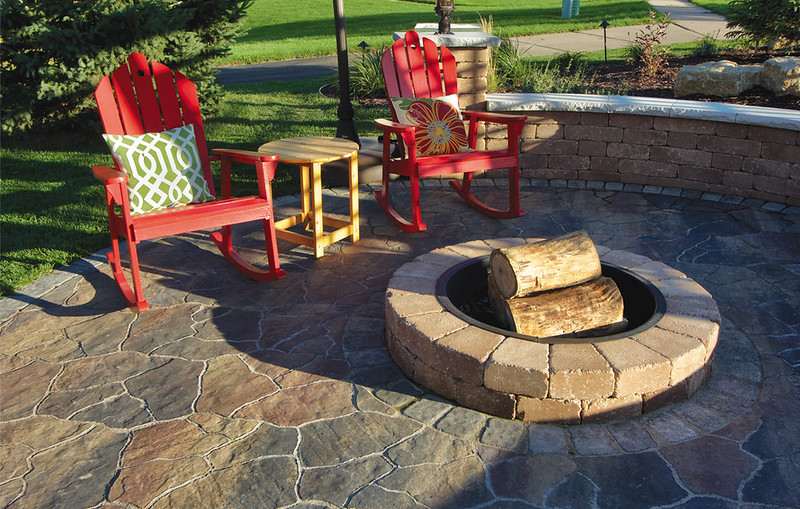
Photo Credit: Rochester Concrete Products / Flickr / CC BY 2.0
Hardscapes are non-living, man-made features. Although they cost more upfront, after they are constructed, they provide years of low-maintenance visual appeal and functionality.
Once you’ve installed a flagstone pathway and wrap-around porch as inviting entryways to your home, you’ve created a landscape design that does not need mowing, weeding, or fertilizing. The more hardscapes, the fewer lawn care and gardening tasks you’ll have to do.
You might like some of these hardscape ideas:
- Walkways
- Patios
- Built-in seating
- Retaining walls
- Water features
- Pergolas and gazebos
- Fire pits
Advantages of hardscapes:
- Durable
- Tolerate harsh weather conditions
- Eliminate lawn care and gardening chores like weeding, fertilizing, watering, and mowing
- Water preservation
- Increase property value
- Create functional space
- Extend indoor living space to the outdoors
Estimated cost: It costs an average of $4.50 to $17 per square foot for professional hardscaping, depending on the type of project, or between $3,300 to $13,200 per project. A walkway costs between $335 and $2,840. A retaining wall is one of the more expensive landscape designs, costing between $3,600 to $9,500.
5. Water Less with Xeriscaping
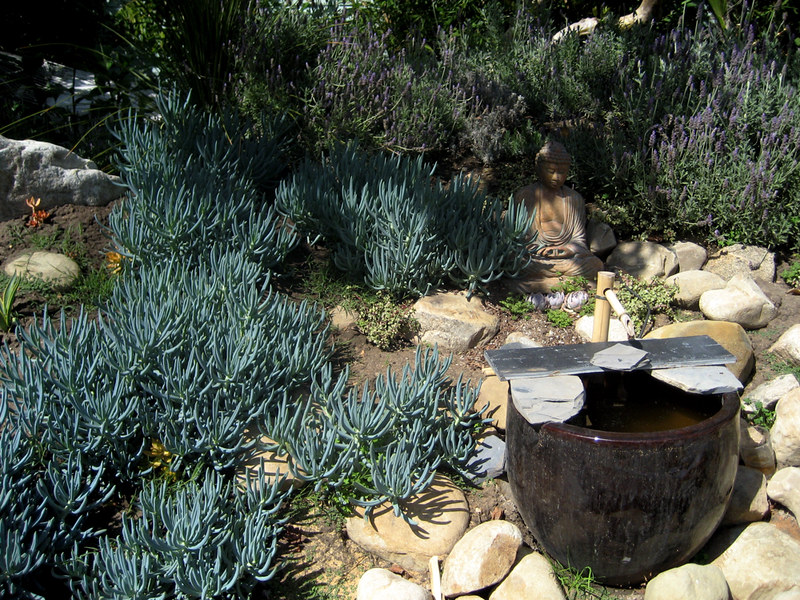
Photo Credit: Jeremy Levine / Flickr / CC BY 2.0
Xeriscaping is another landscaping idea that saves water and time. This type of landscaping uses drought-tolerant plants and other low-maintenance features to replace grass. Succulents, native plants, and other plants that require little water, like liriopes, create an efficient and diverse display. Many xeriscaping features require no fertilization and little to no pruning.
Let’s look at some ways to xeriscape:
- Use rock gardens in place of grass
- Lay down mulch in as many areas as possible
- Group together plants with similar needs
- Use irrigation systems that provide only as much water as needed, depending on the plant
- Plant succulents, native plants, and other cultivars that are drought-tolerant
Advantages of xeriscaping:
- Decreases water use, which can lower water bills
- Reduces or eliminates lawn mowing and other lawn care tasks
- Decreases use of harmful chemicals like pesticides, herbicides, and fertilizers
- Decreases soil erosion and run-off
Estimated cost: Expect to pay between $5 to $20 per square foot for professional installation, depending on materials, type of feature, and the size of your yard.
6. Get Grounded in Groundcover
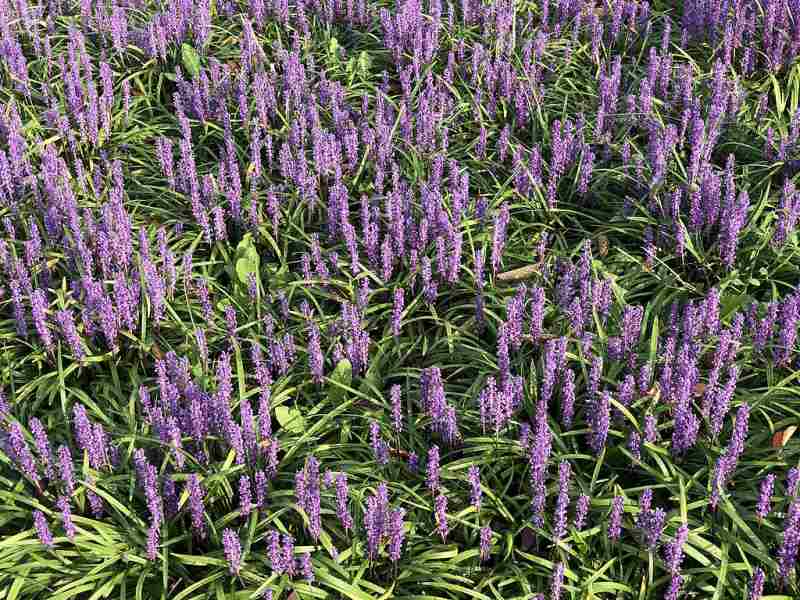
Photo Credit: Famartin / Wikimedia Commons / CC BY-SA 4.0
Using groundcover instead of grass eliminates or reduces the need to mow. Choosing low-maintenance groundcover means less watering, fertilizing, and other activities necessary to maintain grass.
You can replace your grass with plants that are low-maintenance and look like grass, with a touch of color. Liriopes are a category of grass-like plants that also flower. They spread to make an excellent groundcover.
Liriopes (Liriope muscari) are not native to Alabama, but some, like monkey grass, are popular amongst Alabama homeowners. Liriope is very low-maintenance. It is drought, heat, and high-traffic tolerant. It suppresses weeds and requires little, if any, fertilizer.
Mixing different types of groundcover plants can give your yard a more interesting and colorful landscape than having a lawn made of only grass. Groundcover also prevents erosion.
If you’re looking for interesting groundcover to partially or completely replace your grass, you may like these plants that are either drought-tolerant, native to Alabama, or both :
- Lilyturf (Liriope muscari)
- Crossvine (Bignonia capreolata)
- Trumpet creeper (Campsis radicans)
- Coral honeysuckle (Lonicera sempervirens)
Advantages of groundcovers:
- Suppress weeds
- Preserve water
- Drought-tolerant
- Prevent erosion
- Require little to no fertilizer
- Require no mowing
Estimated cost: The cost of groundcover plants depends on the plant type, size, how they’re sold, and purchase location. A container plant costs about $40. Plant trays cost about $10. The same plant may cost between $4 and $400 when sold as seeds, depending on the number of seeds.
7. No More Mowing with Artificial Grass
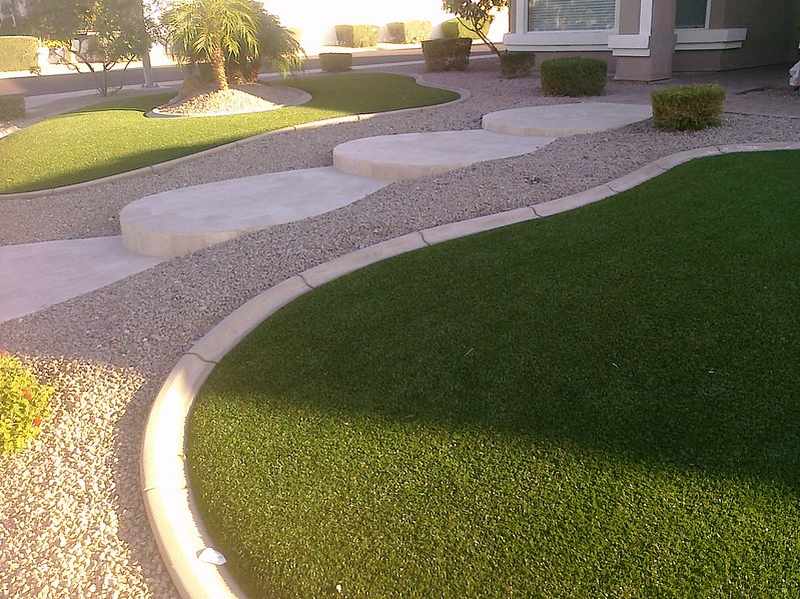
Photo Credit: Nick Bastian / Flickr / CC BY-ND 2.0
Artificial grass means no more mowing, watering, fertilizing, dethatching, or any of those maintenance chores associated with real grass. Although artificial grass is costly initially, you’ll only have to do occasional maintenance, like cleaning it and keeping it free of debris.
You’ll also contribute to a cleaner environment. Pesticides, herbicides, and fertilizers that would have been used to maintain your lawn will no longer be applied and run off into the water supply.
If you choose artificial turfgrass, be aware that it reduces the nutrients the soil underneath it receives. So, the soil can be damaged.
Advantages of artificial grass:
- Pest-resistant
- Low maintenance
- Conserves water, which can lower your water bill
- Suppresses weeds
- Tolerates heavy foot traffic
- Weather resistant
- Eliminates mowing
- Some are made from eco-friendly materials
- Promotes a cleaner environment because it eliminates fertilizer and pesticide applications that eventually run off into the water supply
Estimated cost: Expect to pay an average of $5.50 to $19.75 per square foot for artificial grass installation, depending on the material, property size, and yard shape.
8. Southern Succulents
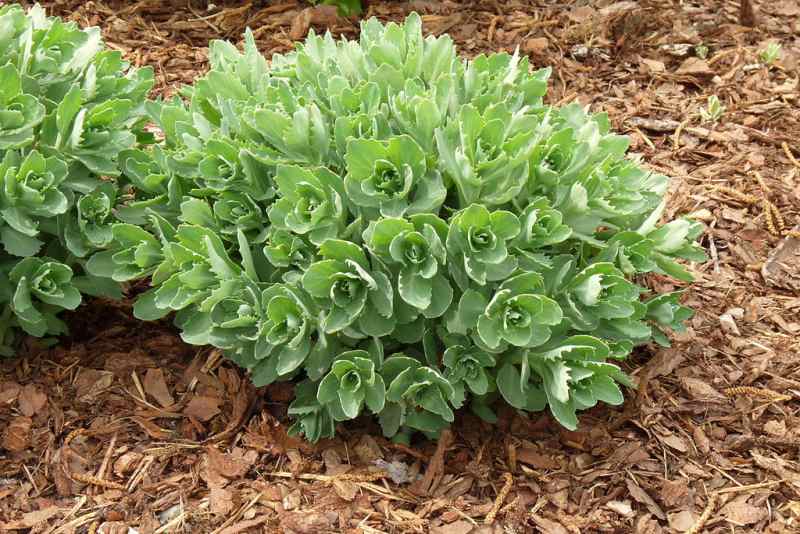
Photo Credit: Kroton / Wikimedia Commons / CC BY 3.0
Succulents are great for low-maintenance landscapes and well-suited for the dry, hot Alabama climate. These plants store water in their stems, roots, and leaves, allowing them to thrive with little watering. They are drought-tolerant and usually require less pruning and fertilization than other plants.
Sedums are a category of hardy succulents. Not all sedums are succulents, but most are, and they come in multiple colors, sizes, and styles. Their flowers usually blossom late in the growing season, so sedums help you keep some visual excitement in your flower bed a little longer.
Here are some sedums and other succulent plants for your Alabama garden bed:
- Elf orpine (Diamorpha smallii Britton ex Small)
- Showy stonecrop (Hylotelephium spectabile)
- Aloe vera (Aloe vera (L.) Burm. f.)
- Common purslane (Portulaca oleracea)
Advantages of succulents:
- Hardy
- Low maintenance
- Drought tolerant
- Variegated appearance provides variety and visual appeal
- Easy to maintain
- Adapt to their environment
Estimated cost: Succulents cost an average of $10 to $75 per plant, depending on plant type and size.
FAQ About Low-Maintenance Alabama Landscaping
Plants native to Alabama thrive best. You can choose non-native plants, but you want to identify options that will grow well in Alabama’s climate. One way to do this is by referring to the plant’s USDA hardiness zone.
Zones indicate the plants that will survive an area’s lowest winter temperatures. Zones differ by 10 degrees Fahrenheit. Alabama’s zones are 7b to 8b. So choose plants within your zone for the best success.
Invasive plants can outcompete native plants, causing them to be greatly reduced or completely replaced. This means hummingbirds, insects, and wildlife can no longer depend on native plants for food and habitat. The ecosystem can become unbalanced and some insect and animal species can begin to decrease. Here are some ways to manage invasive plants:
• The best way to keep them from spreading is to remove the plant.
• If the seed has not formed yet, remove the flowers by deadheading.
• Pull up small plants or seedlings.
• Cut down large, woody varieties and treat the stump with an herbicide.
Drip irrigation systems allow homeowners to save water by watering more efficiently. They are excellent choices for xeriscape designs. Drip irrigation systems usually result in using less water than sprinkler irrigation. You can use a simple drip irrigation system under mulch, or a more elaborate system for larger areas.
Professional Alabama Landscape Maintenance
With these eight ideas, you can create a beautiful landscaping design that reduces the time it takes to keep it healthy and visually appealing. Alabama has over 15 state parks. Why spend your time maintaining your yard when you can spend it enjoying walking trails, beaches, biking, and other recreational activities?
If you’re ready to treat yourself to a well-kept lawn without all the effort, contact a local lawn care professional.
Main Photo Credit: Bellingrath Gardens / Pixabay